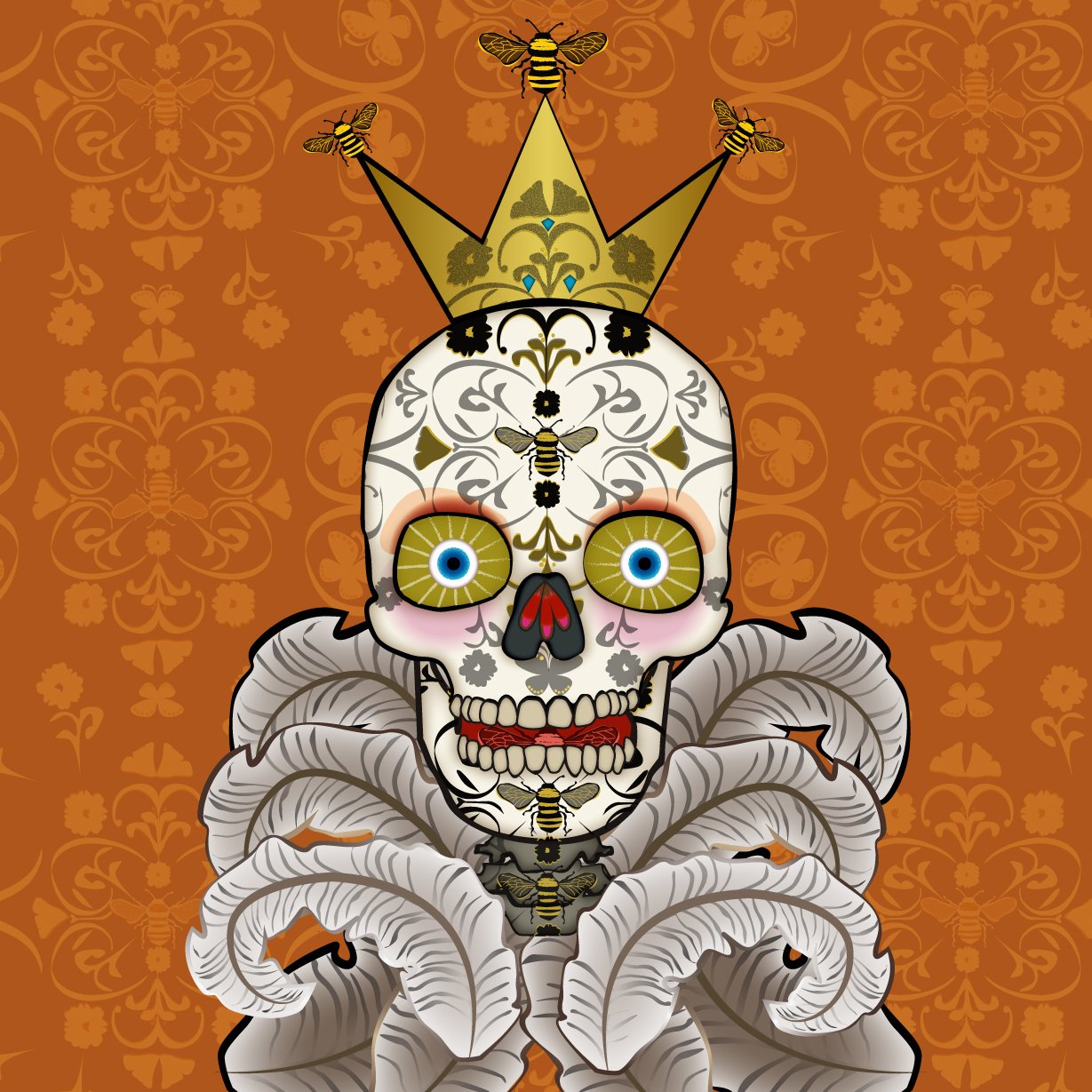Dia de Los Muertos Series
Las Calaveras
Calaveras
The Dia de Los Muertos calaveras (skulls) in Mexican culture serve as a powerful symbol of death and rebirth. Whether they are sugar skulls, face paintings or art they offer a glimmer of hope amidst the inevitability of our mortality. These calaveras are often adorned with vibrant flowers and animals, embodying the rich tapestry of life itself, reminding us of the transient nature of our existence. They represent the brevity of life, often depicting the fun and frivolous moments of life. Or they can tell a story of fleeting beauty and the interconnectedness of all living beings.
La Catrina, José Guadalupe Posada, 1910/1913
La Catrina
La Calavera Catrina, an iconic figure in Mexican culture. She has a rich history dating back to the time of the Mexican Revolution. Her illustrious image was initially immortalized as an iconic zinc etching created by the Maestro José Guadalupe Posada, a revered Master printmaker and lithographer from Mexico. This evocative etching, produced around 1910, served as an enduring symbol of the struggle of cultures, European vs. Meso - American.
Years later, in 1947, the enigmatic La Calavera Catrina found herself immortalized once again, this time in Diego Rivera's fresco mural entitled "Sueño de una Tarde Dominical en la Alameda Central" (Dream of a Sunday Afternoon along Central Alameda). Rivera's masterpiece effortlessly captured the essence of La Catrina, providing a powerful denouncement of the prevailing classism that plagued Mexican society during that era. With its scathing critique of those who aspired to high social status while forsaking their own heritage for European fashions and customs, Rivera's interpretation further solidified La Calavera Catrina's significance as a cultural icon.
As time marched on, La Calavera Catrina seamlessly evolved, becoming an integral part of the vibrant and lively Dia de Los Muertos celebrations. Each year, during these festivities, she graces the festivities with outlandish costumes and humor. She is a symbol of remembrance, a quintessential representation of the occasion's joyful and spirited atmosphere.
PicosClark, Queen B
Los Muertos
I have always been captivated and mesmerized by the vibrant and poignant celebration of life during Dia de Los Muertos. This enchanting and cherished tradition holds a special place in my heart as it provides a unique opportunity to honor and commemorate our departed loved ones. With its kaleidoscope of colors, heartfelt altars adorned with marigolds and photographs, and the aroma of traditional foods and drinks wafting through the air, Dia de Los Muertos truly encapsulates the essence of celebrating the lives of those who have passed on.
In this series, we aim to infuse the spirit of Dia de Los Muertos with the beauty and interconnectedness of both humanity and nature. It is a merging of two realms, where the ethereal meets the earthly, and the result is a tapestry that celebrates the eternal cycle of life. And who better to embody this celebration than the Queen Bee herself? She stands as the true Queen of Life, tirelessly ruling her vibrant and bustling hive, where life is created and nurtured.
Through the fusion of Dia de Los Muertos and the Queen Bee, we aim to explore the delicate balance between the realms of the living and the departed. It is a tribute to the enduring power of memory and the notion that, even in death, our loved ones are forever intertwined with the natural world.



